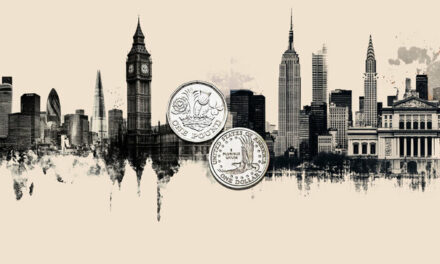GBP/USD trades around 1.3130 on Friday at the time of writing, broadly stable on the day, as markets await the Autumn Budget and reassess the Bank of England’s (BoE) dovish hold. Following a close 5-4 vote to keep interest rates unchanged at 4.00% on Thursday and with officials leaving the door open to a possible cut in December, the Pound Sterling (GBP) now hinges on how the Treasury balances fiscal credibility and economic growth when UK Chancellor Rachel Reeves unveils her plan on November 26.

Reeves’ refusal to rule out tax hikes has already weighed on the currency while supporting Gilts, a sign that markets perceive fiscal discipline as reducing risk premiums but also dampening economic activity.
For now, the outlook seems finely balanced between opposing risks. On the one hand, fiscal tightening increases the likelihood of faster BoE easing, which limits GBP appeal. On the other hand, an inflationary budget, for example through higher Value-Added Tax (VAT) or consumption levies, would constrain rate cuts and provide short-term support to the Pound Sterling. Meanwhile, the revised Office for Budget Responsibility (OBR) forecasts on productivity and growth add pressure, as lower expected output would mean weaker tax revenues and a wider fiscal gap to close.
Four forward-looking scenarios stand out for the Budget approaches and the Pound Sterling:
1) Telegraphed discipline
The Treasury fills a roughly £25 billion annual gap through extending tax threshold freezes, broadening National Insurance to landlords and partnerships, and raising taxes on dividends and certain capital gains, while avoiding measures that fuel inflation.
This would enhance credibility, slightly reduce Gilt risk premia, and align rate expectations with current pricing. The impact on the currency could be neutral to mildly negative as monetary easing expectations outweigh risk premium relief. GBP/USD likely stays near 1.3100-1.3200.
2) Double dose of consolidation
A sharper fiscal squeeze via higher income tax rates and credible spending cuts would further rally Gilts and strengthen BoE easing expectations. Forex implications could be moderately negative as tighter fiscal policy reinforces a dovish BoE and softer domestic growth. GBP/USD could drift below 1.3100.
3) Inflation side effects
Tax adjustments that lift inflation, like VAT or excise hikes, while maintaining fiscal credibility, would push short-end yields higher and slow BoE rate-cut bets. The effect on the currency could be positive in the short term as reduced rate-cut expectations could lift GBP/USD back toward 1.3300–1.3400, assuming a hawkish tone from the BoE in December.
4) Loosened rules, weak credibility
Delayed or uncertain revenue measures, higher Gilt issuance, or relaxed fiscal rules allowing more borrowing would revive concerns over debt sustainability. This scenario would be clearly negative for the currency and GBP/USD risks retreating further if confidence erodes, echoing a lighter version of the 2022 mini-budget shock.
Beyond budget day, the Pound Sterling’s trajectory would depend on the budget–monetary policy interplay. A swift, credible fiscal consolidation that avoids inflationary tax measures would allow the Bank of England to ease gradually, anchoring but limiting upside for the GBP. Conversely, an inflationary or underwhelming budget could shift the rate path, either through reduced rate cuts (short-term GBP support) or higher risk premiums (more persistent weakness).
GBP/USD Technical Analysis: Tests neckline resistance after bearish breakout from rounded top

The GBP/USD pair appears to be forming a potential rounded top pattern on the daily chart, with the neckline around 1.3150 having already broken, reinforcing the bearish bias. The pair is currently retesting this neckline as resistance but remains below it.
A weekly close beneath this level would strengthen the downside outlook, which would gain further confirmation if the pair falls below the November 4 low at 1.3010. In that scenario, GBP/USD could extend its decline toward the projected target of the rounded top, which is near 1.2516.
Conversely, a sustained move back above 1.3150 would ease downside pressures and open the door to a potential rebound, with scope for a recovery toward the July 1 high at 1.3788.







